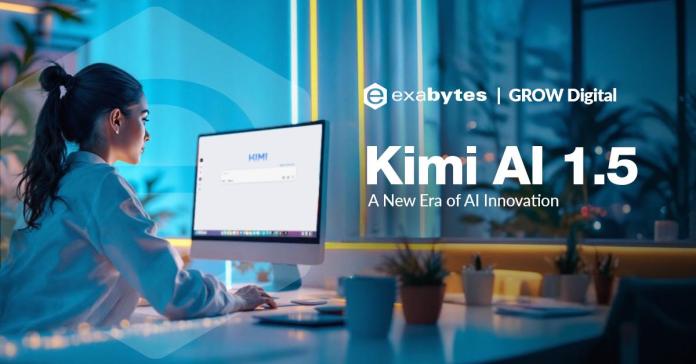Kimi Launches Free AI Agent with Browser, Terminal and Data Powers for Ultimate Automation

China’s Kimi Unleashes Free AI Agent with Browser, Terminal, and Data Powers
A Leap Forward in Autonomous Digital Intelligence
Kimi has introduced a publicly accessible AI agent that signals a significant advance in the automation of digital workflows. This release offers individuals and organizations a versatile tool with seamless integration across key computing environments. The agent operates remotely, granting itself complete access to a browser, terminal, and file system—functions that dramatically expand capability beyond conventional assistants. This pivotal launch makes powerful tools widely available for anyone seeking creative, analytical, or logistical digital solutions.
The agent leverages a robust architecture designed for autonomy and tool interaction. By connecting to external interfaces, it orchestrates complex procedures in real time. Tasks that once demanded manual input—research, file management, website building—are performed through delegated automation. The inclusion of browser and terminal access empowers users to combine web resources with direct system commands, enabling workflows that span both cloud and local environments. These features position Kimi’s agent as a core utility for users requiring full-stack computational versatility.
Building and Presenting: The Automation Advantage
Among its headline capabilities is the ability to construct sophisticated websites and visual presentations from scratch. This extends far beyond template-based generators, tapping into customized layouts, interactive components, and integrated multimedia. By fusing browser access with terminal proficiency, the agent can download assets, configure servers, and deploy application layers directly, streamlining development pipelines. For professionals and educators facing time constraints, this enables the rapid assembly of tailored digital resources without the necessity for extensive manual coding.
Presentation workflows also benefit from highly automated content assembly. The agent can ingest information from disparate sources, synthesize it, and structure engaging visual narratives. Not only does this save time, but it also introduces higher-level logic into design processes—optimizing layouts and applying best practices drawn from vast reference sets. Users can confidently tackle large-scale communication needs, ensuring that their materials not only inform but also engage audiences effectively.
Data Analysis at Massive Scale—No More Limits
Stepping into the domain of quantitative work, the Kimi agent can intuitively process up to one million rows of raw data. In practice, this means crunching through sprawling datasets in scientific, financial, or operational contexts. The system autonomously cleans, aggregates, and visualizes data, turning unwieldy figures into actionable insight. With advanced charting and dashboard construction, users gain detailed overviews and drill-downs tailored to their objectives, ready for exploration and decision-making.
This magnitude of analysis, previously reserved for enterprise-grade tools, is now accessible for use cases ranging from academic research to business reporting. By automating the steps of data ingestion, transformation, and visualization, the agent eliminates bottlenecks that traditionally slow down analytical cycles. For teams handling extensive operational metrics, survey responses, or transactional records, the shift to autonomous data handling offers transformative efficiency.
Autonomous Research and Project Delivery
One of the agent’s standout traits is its capacity to conduct comprehensive research and orchestrate project delivery without ongoing supervision. Leveraging both its reasoning engine and browser access, it navigates the web, aggregates relevant content, and synthesizes findings into structured deliverables. For organizations juggling resources or individuals with limited time, this autonomous approach to knowledge work addresses the need for scalable, reliable results.
Project delivery is streamlined through completion-oriented workflows: the agent breaks down complex objectives into actionable steps, executes each independently, and compiles outcomes into coherent packages. Whether preparing in-depth reports, gathering market intelligence, or constructing multi-layered systems, tasks are handled from inquiry through to finalized deliverable. The convergence of autonomous reasoning, tool use, and output generation reflects a paradigm shift in practical AI deployment.
Impact and Use Cases: Automation for All
The accessibility of this AI agent changes the landscape for technical and non-technical users alike. Developers can rapidly prototype systems or debug projects directly via terminal, while analysts find new agility in handling massive data challenges. Educators and business managers discover creative authoring and reporting at speed. The agent’s interface and logic reduce barriers to sophisticated outcomes, democratizing tools once limited to experts.
From web-building and code generation to multimedia storytelling and geopositioned data analysis, the agent adapts to broad application demands. Its autonomous operation supports self-driven creativity and structured output, making it an invaluable asset in competitive and exploratory settings. By placing advanced capabilities behind an accessible interface, Kimi signals a future where automation is both powerful and user-focused.
Start Experimenting with New Possibility
The introduction of this agent marks a pivotal point in the proliferation of AI capabilities that are both flexible and robust. Users interested in automating websites, presentations, or data visualizations can explore its features directly, leveraging browser and terminal powers to drive results. As the boundaries between online research, code execution, and file management blur, the agent paves the way for richer, more efficient digital work.
Experimentation and adaptation remain at the core of technology adoption. With full-scale automation at your fingertips, it is now possible to create, analyze, and deliver in ways that redefine expectations around digital productivity. The ongoing evolution of autonomous digital agents promises far-reaching possibilities for how we build, learn, and explore in connected environments.
